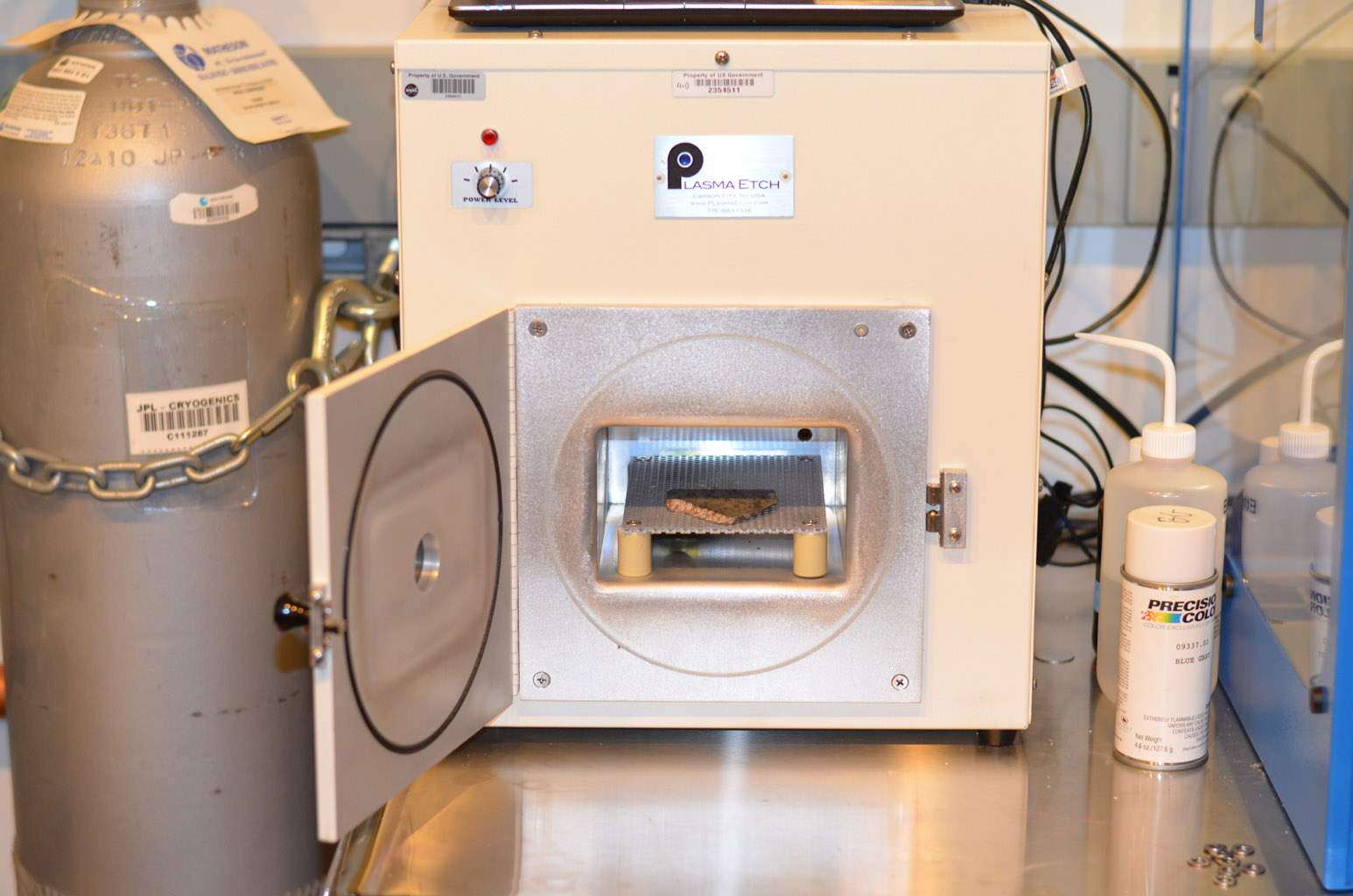
A slice of a meteorite scientists have determined came from Mars placed inside an oxygen plasma cleaner, which removes organics from the outside of surfaces. This slice will likely be used here on Earth for testing a laser instrument for NASA’s Mars 2020 rover; a separate slice will go to Mars on the rover.
A chunk of Mars will soon be returning home.
A piece of a meteorite called Sayh al Uhaymir 008 (SaU008) will be carried on board NASA’s Mars 2020 rover mission, now being built at the agency’s Jet Propulsion Laboratory in Pasadena, California. This chunk will serve as target practice for a high-precision laser on the rover’s arm.
Mars 2020’s goal is ambitious: collect samples from the Red Planet’s surface that a future mission could potentially return to Earth. One of the rover’s many tools will be a laser designed to illuminate rock features as fine as a human hair.
That level of precision requires a calibration target to help tweak the laser’s settings. Previous NASA rovers have included calibration targets as well. Depending on the instrument, the target material can include things like rock, metal or glass, and can often look like a painter’s palette.
But working on this particular instrument sparked an idea among JPL scientists: why not use an actual piece of Mars? Earth has a limited supply of Martian meteorites, which scientists determined were blasted off Mars’ surface millions of years ago.
These meteorites aren’t as unique as the geologically diverse samples 2020 will collect. But they’re still scientifically interesting — and perfect for target practice.

